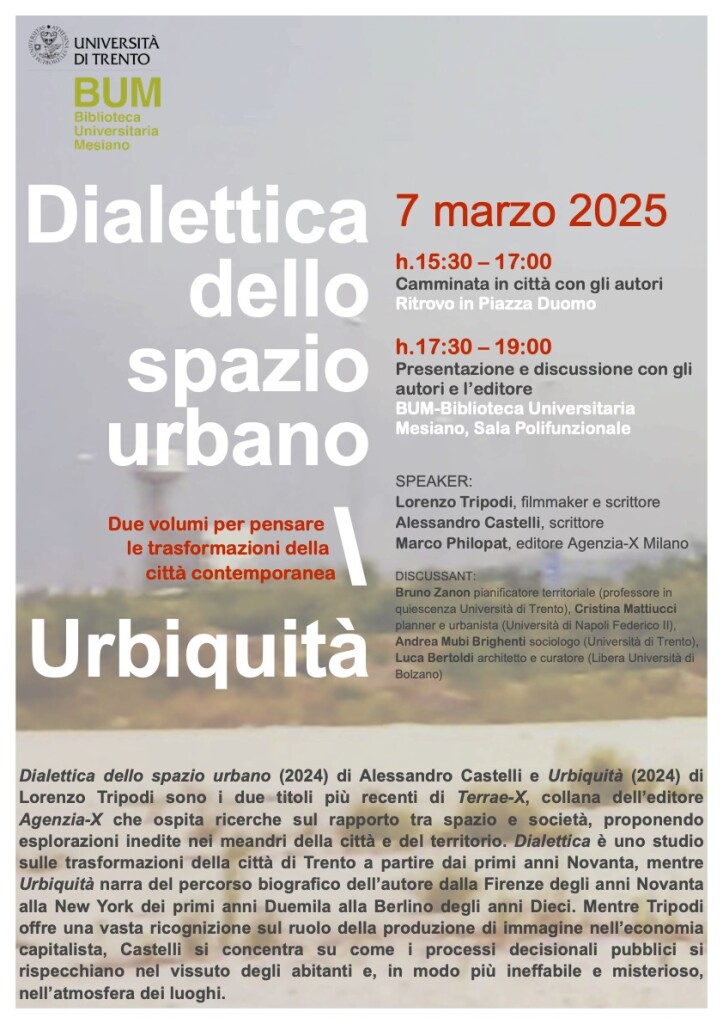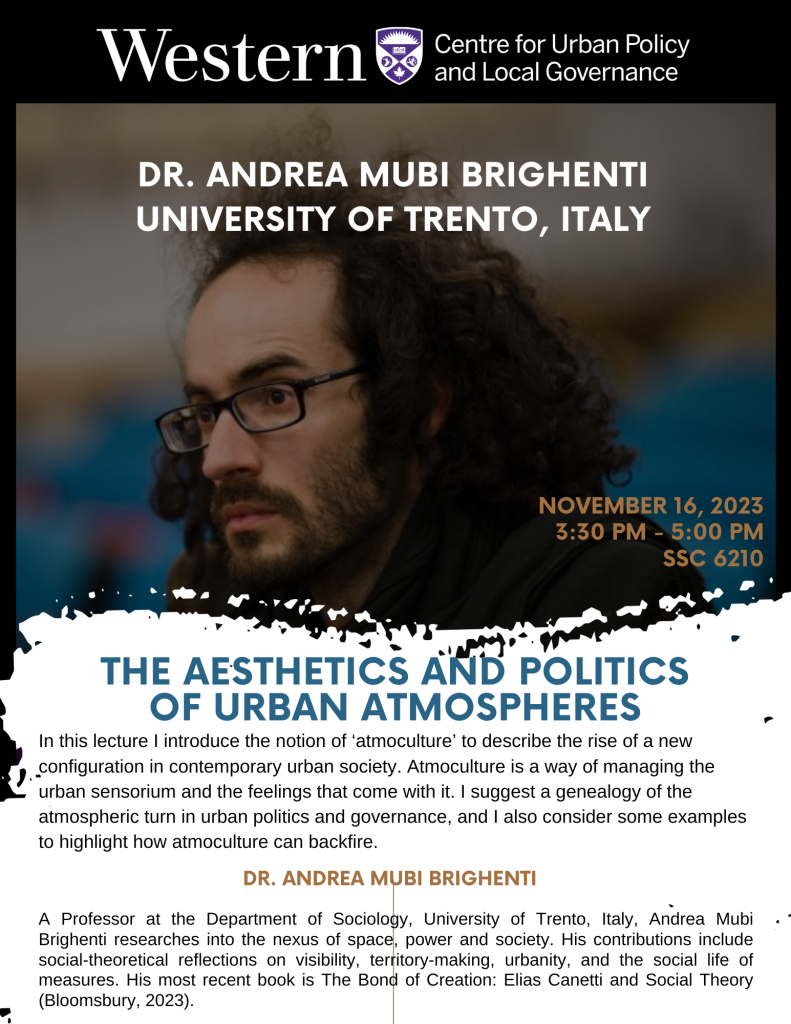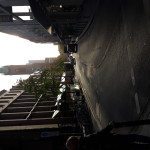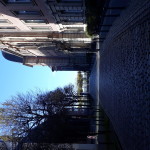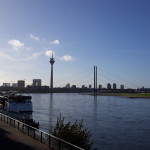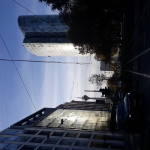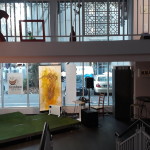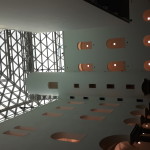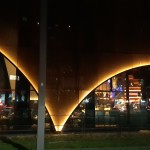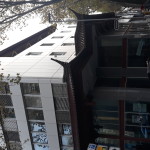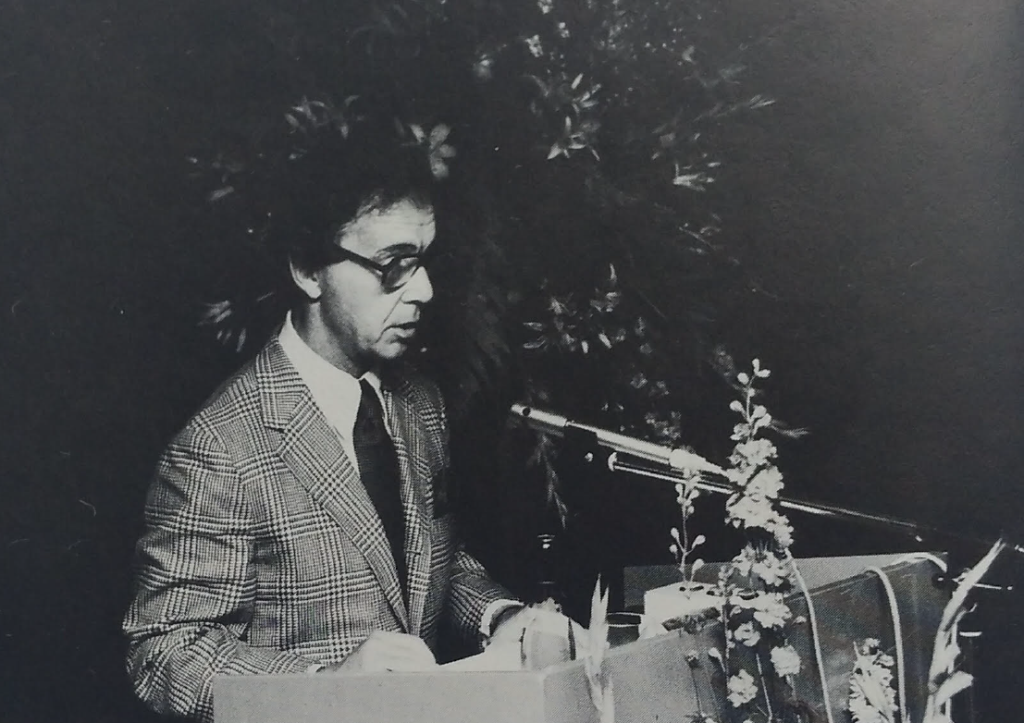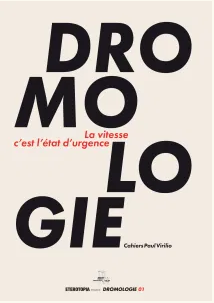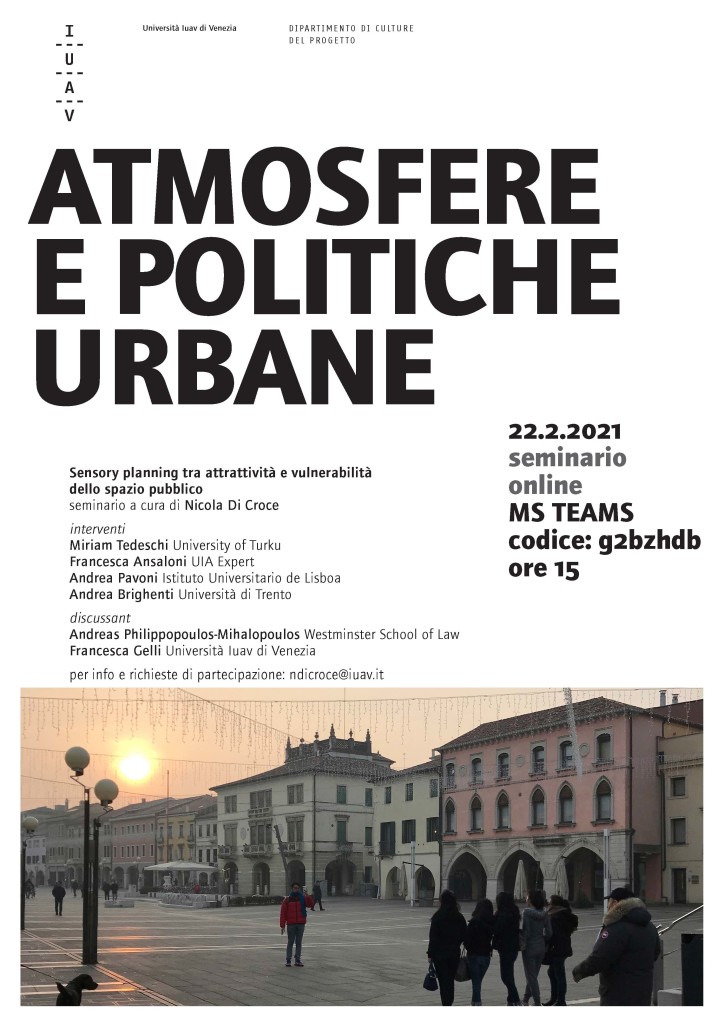Category Archives: atmoculture
Public Space and the Study of Urban Territories
An online seminar to be given on Thursday 07 December 2023 Time: 12:30-13:30 (UTC+00:00 – Dublin, Edinburgh, Lisbon, London.)
Abstract:
In this lecture, Professor Brighenti seeks to introduce territoriology as a research approach and a sensitivity that can be applied to the study of public space. He explores the intersection between social theory, ethnography, human geography and design as helpful to study territorial productions in the making. Each territory is shaped by imaginational and figurational forces of social life as they get incorporated into a set of materials. Starting from this assumption, he would like to illustrate a few cases and possible applications in the field of urban studies.
To get the Zoom link, pls contact ARCHI Research <ARCHI-research@cardiff.ac.uk>
The Aesthetics and Politics of Urban Atmospheres
Goffman Back in Town – Lecture
A lecture based on my paper co-authored with Andrea Pavoni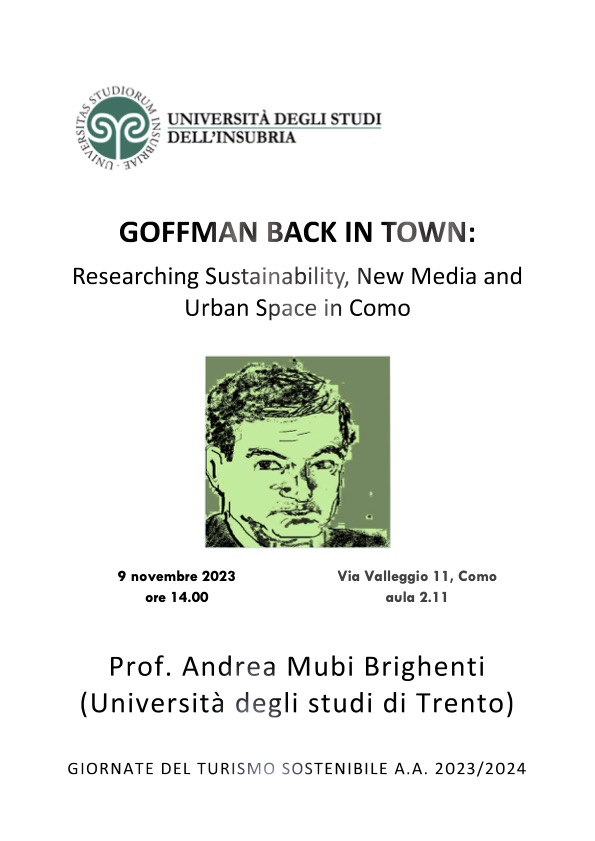
tipping tripping point -+- New Playlist ! >>> Tribute to Joseph Beuys <<<
A walk in Düsseldorf
Goffman back in town. New relations in public
Co-authored with Andrea Pavoni
Published in Etnografia e Ricerca Qualitativa / Ethnography and Qualitative Research
05-Brighenti-Pavoni-Goffman-Back
S.I. Erving Goffman’s first 100 Years edited by Pier Paolo Giglioli– https://www.rivisteweb.it/issn/1973-3194
La vitesse au pouvoir – Cahiers Paul Virilio
Happy to be included in Dromologie 01, a new journal of Virilio studies.
+info | http://www.eterotopiafrance.com/catalogue/la-vitesse-cest-letat-durgence/
my hosted piece in pdf | Brighenti 2021 la vitesse au pouvoir
Atmosfere e politiche urbane – a seminar at IUAV
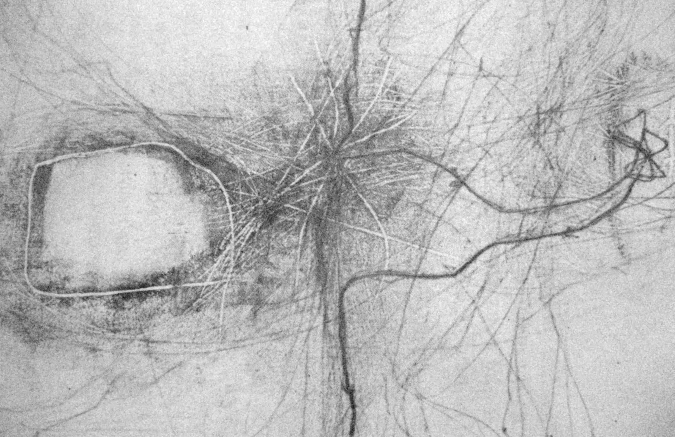
On Urban Trajectology. Algorithmic Mobilities and Atmocultural Navigation (with Andrea Pavoni)
NOW OUT in Distinktion. Journal of Social Theory – Available at : https://www.tandfonline.com/doi/full/10.1080/1600910X.2020.1861044
Abstract
In this piece, we introduce the notion of ‘atmoculture’ as a conceptual tool to analyse the new forms of mobility supported and enacted by digital algorithms. In historical perspective, we analyse how modernity has created a movement-space where the problem of finding one’s way through an increasingly ‘displaced’ urban space first popped up, with noticeable psycho-social consequences. Reconstructing the new digital media as a continuation of this spatial imagination, we seek to zoom in onto the forms of mobility facilitated by digital algorithms. Urban digital navigation, we suggest, proceeds in parallel with a reorientation of the urban experience towards atmospheric considerations, maximising safety and pleasurableness in the user’s encounters with the environment. In this context, atmoculture appears a spatial-aesthetic, psycho-cultural, and bio-technological milieu that prepares space for convenient navigation. We discuss a number of consequences: first the disburdening effect, whereby subjects delegate to a number of perceptions and decisions to algorithms, expropriating the natural problem-solving aspect of subjectivity; second, the invisible transformations of urban space due to the biases and skews that are built in algorithms themselves; third, the tensional, even contradictory outcomes of atmocultural expectations, whereby the goal of a secure and pleasant environmental interaction is undone by the very quantity of information provided and the level of alertness required from the user.
Keywords
Spatial perception; Urban mobility; New media; Hodology; Urban Navigation; Urban atmospheres; Atmoculture
Review of Farzaneh Haghighi “Is the Tehran Bazaar Dead? Foucault, politics, and architecture”
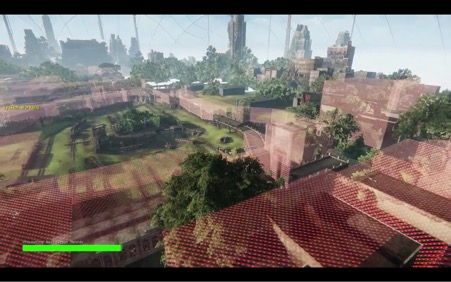
Vertical Vision and Atmocultural Navigation. Notes on emerging Urban Scopic Regimes (with Andrea Pavoni)
Still from Harun Farocki : Computer Animation Rules, Lecture at IKKM, 25 June 2014, available at https://vimeo.com/100092938
NOW OUT in Visual Studies : https://www.tandfonline.com/doi/full/10.1080/1472586X.2020.1840089
Abstract. This paper analyses vertical vision by tracing its possible genealogy and exploring the forms it takes in the contemporary city. In the first section, vertical vision is situated in the context of its cosmographic tenets. In the second section, the critique of verticality is complemented by a topological approach where vertical vision can be seen folding into a novel visual grammar. The lineaments of this grammar can be retrieved by attending specifically to algorithms and their role in contemporary urban perception, which we discuss in the third section. The fourth section implements the suggestions of two artists: Harun Farocki’s notion of navigation, and Hito Steyerl’s notion of bubble vision. Exposing the central role played by digital platforms in ushering in this novel paradigm, bubble vision can be reconstructed as the logical end-point of classical vertical vision. This comes in conjunction with the rise of peculiar visual-cultural configuration, which could be called ‘atmoculture’. Section five submits that atmoculture represents the cultural milieu of bubble vision. In conclusion, the paper invites visual scholars interested in the study of verticality to recognise bubble vision, together with its atmocultural background, as a new expression, and a reconfiguration, of vertical vision: similarly centred and disembodied, exhilarating, and dangerously de-responsibilising.
